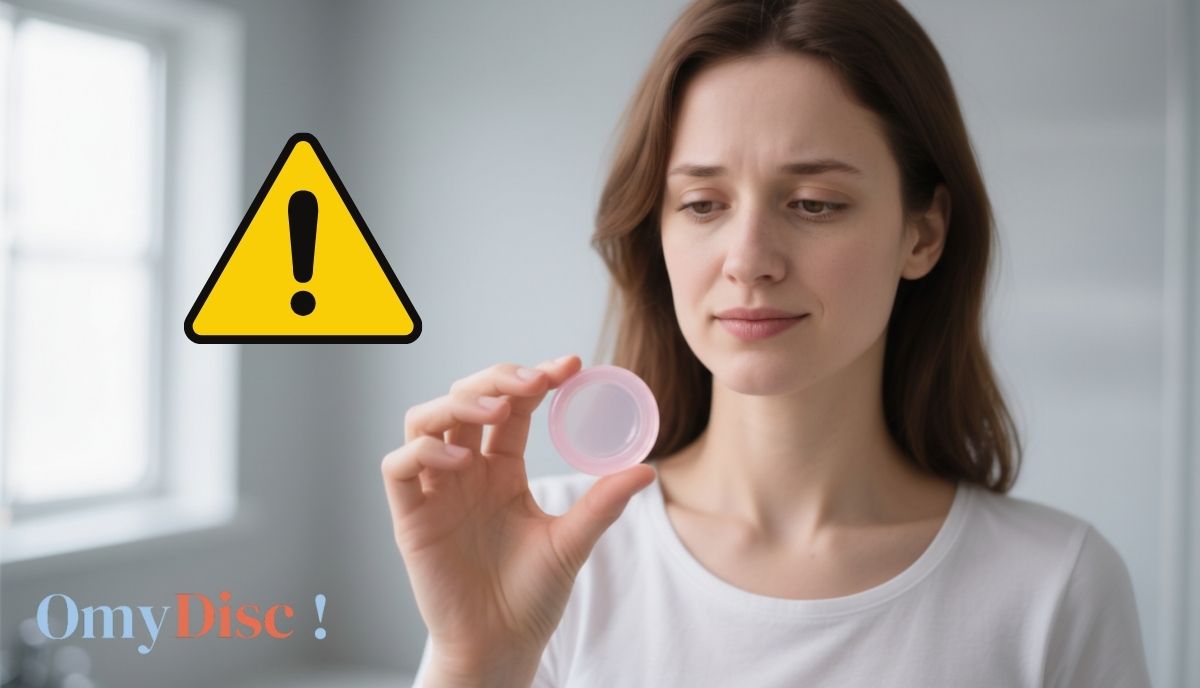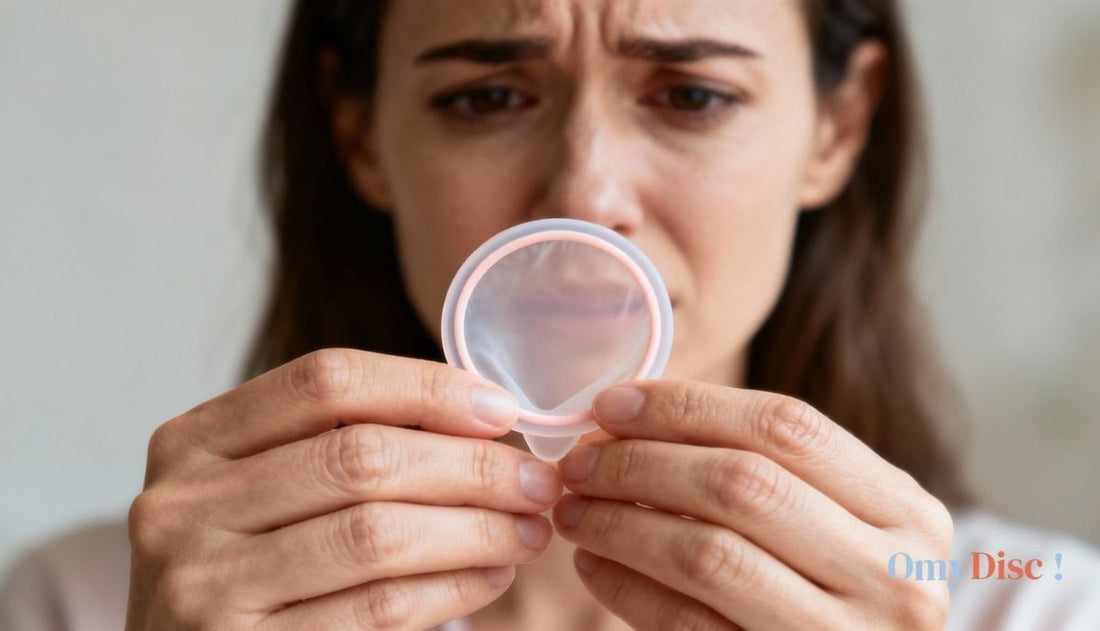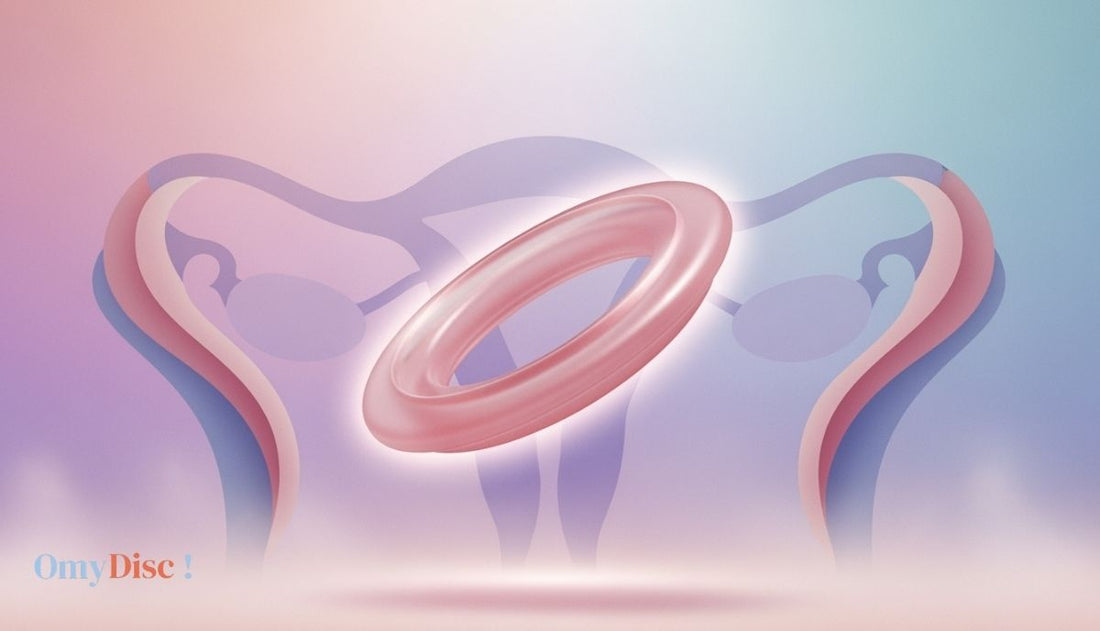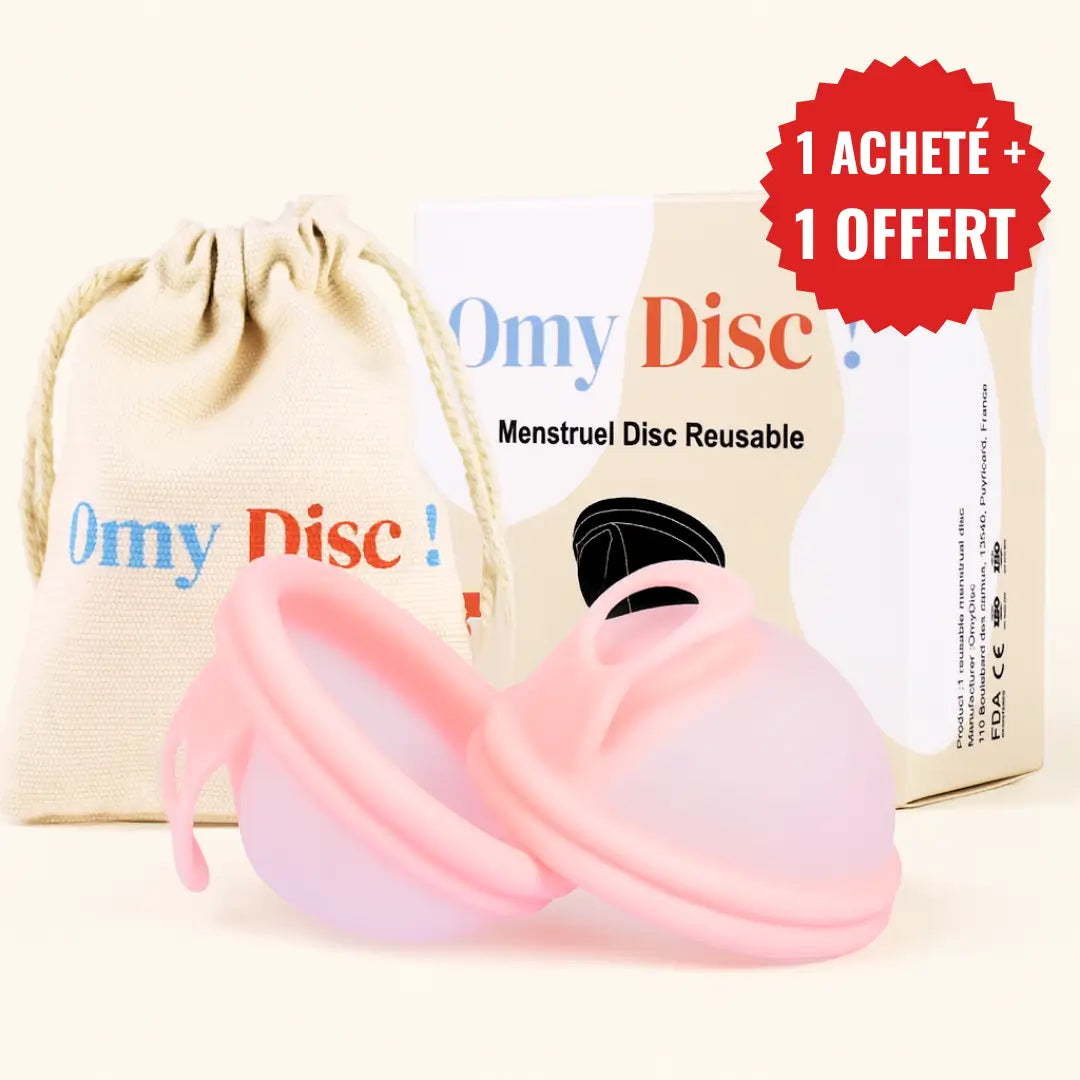When used according to hygiene guidelines, the menstrual disc is certainly the safest internal period protection, especially compared to tampons. However, it remains essential to follow proper hygiene practices to avoid potential dangers such as:
- Toxic shock syndrome: to avoid this risk, change your period protection at least every 8 hours.
- Allergic reactions: minimize this risk by choosing a disc made from body-safe materials like medical-grade silicone (such as OmyDisc reusable discs).
- Vaginal infections: reduce this risk by properly cleaning your disc and washing your hands before use.
Toxic shock syndrome (TSS): a rare but real risk with menstrual discs
What are the symptoms of toxic shock syndrome?
Toxic shock syndrome (TSS) is one of the most serious dangers associated with using menstrual products like tampons, menstrual cups, menstrual discs… While rare, it can lead to severe complications. Its symptoms include:
- High fever and chills
- Nausea, vomiting, or diarrhea
- Sore throat
- Muscle aches
- Rash resembling sunburn
- Sudden drop in blood pressure (which can cause fainting)
What can cause this bacterial infection when wearing a disc?
Toxic shock syndrome is caused by toxins released by Staphylococcus aureus, a bacteria also known as golden staph. This bacteria, present in about 1% of women, typically causes no reaction in the carrier. However, when in prolonged contact with blood, it multiplies and produces toxins that, when spread throughout the body, trigger toxic shock. Therefore, when you wear your menstrual disc for more than 8 to 12 hours, you risk toxic shock.
How to prevent TSS with a menstrual disc?
The menstrual disc should be removed and rinsed at least every 8 hours to prevent bacterial growth. You should also ensure your hands are clean before handling your disc, which should always be cleaned before use.
Allergies: another risk with menstrual discs
What are the symptoms of an allergy to the disc?
- Redness or itching around the vaginal area
- Burning sensation
- Localized swelling
- Vaginal dryness or pain during insertion or removal
What causes allergies to menstrual discs?
Allergic reactions can be triggered by any substance depending on each person's sensitivity. A normally harmless substance can trigger an allergy in a person if their body considers that substance an allergen.
How to avoid allergic reactions to menstrual discs?
To reduce allergy risks, choose a menstrual disc made from hypoallergenic materials like medical-grade silicone, without harsh chemicals like bisphenol A (BPA), latex, etc. While zero allergy risk doesn't exist, a product made with hypoallergenic materials presents fewer risks of causing allergies. This is the case with our discs at OmyDisc.
Vaginal infection: a risk to monitor when using a menstrual disc
Causes of vaginal infections
These infections are generally due to the proliferation of bacteria or fungi, promoted by prolonged moisture inside the vagina. This occurs mainly during poor personal hygiene (such as when the user handles their menstrual disc without having previously washed their hands), prolonged disc wear, or use of a disc that hasn't been properly cleaned.
Symptoms of a vaginal infection
- Vaginal itching or irritation
- Abnormal vaginal discharge (yellowish, greenish, or brownish in color, or with an unpleasant odor such as fishy or peppery smells)
- Pain during intercourse
How to prevent infections?
- Wash your hands before handling your menstrual disc.
- Clean your menstrual disc before each use. Reusable models should also be cleaned after each removal, while disposable models are simply thrown away.
- Sterilize your disc at least once at the end of each cycle before storing it.
- Remove your menstrual disc at least every 8 hours maximum, even if it's not completely full, to reduce the risk of TSS.
What to do if you suspect TSS, an allergy, or an infection related to the menstrual disc?
- Remove the disc immediately.
- Consult a healthcare professional such as a gynecologist or dermatologist.
Stop using the menstrual disc and switch to other external menstrual products like a sanitary pad, period underwear, etc., until the problem is resolved.






